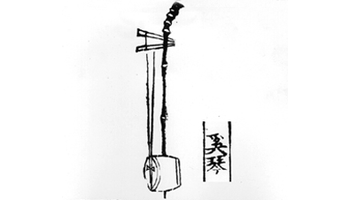The structure and production process of Xiqin
The craftsmanship of Xiqin is very particular. The craftsmen of all dynasties have used the wood of Changbai Mountain as the vibration panel, the bamboo with the inner diameter of 10 cm, the strings of silk, and the horsetail. And thin bamboo rods to make bows.

After practice and innovation, sycamore wood was gradually used instead of thorn wood as the vibration panel, and steel wire was used instead of silk as the strings. Playing technique to make it perform better.
The traditional Xiqin is similar in shape to the midrange banhu of the Han nationality, but the qin barrel does not use coconut shells. It is composed of a piano tube, a piano rod, a peg, a jin, a bridge, a string and a bow, and the total length is 80 cm to 84 cm.
piano
Made of bamboo or wood, mostly made of moso bamboo or rosewood and colored wood, there are two kinds of long cylindrical and hemispherical, with square holes for inserting the piano rod at the top and bottom. Rear sound window or open.
piano bar
Also known as Lizhu, it was originally made of black-spotted bamboo, which has a long growth period and many bamboo knots. The thicker bamboo root is used as the headstock. .
peg
Also known as Zhoudou, it is a wooden cone. The two pegs are inserted into the upper end of the piano rod in a horizontal eight shape, and the thicker top of the shaft is used to stretch the strings.
piano, strings
In the beginning, there was no jinjin, only the bridge was placed in the middle of the top of the qin barrel, and two thicker silk strings were attached.
bow
Wooden bow, with ponytails tied at both ends as bow hairs, and played between the two strings
 渝公网安备 50010702504639号
渝公网安备 50010702504639号